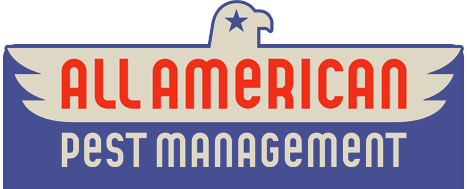Common Fall Pests
There is a lot that goes into getting ready for the fall and holidays, but many homeowners assume that pest control is not one of them. While some pest populations decrease with the emergence of cooler weather there are some that begin to become active or thrive in these conditions.
Due to lower temperatures and consistent rainfall patterns, many insects and rodent pests look for warmer, and drier places to spend the winter season. Unfortunately, with the abundance of food and trash from holiday celebrations and the warmth your home provides becomes an enticing invitation to fall pests.
Rodents
As the weather becomes colder, mice and rats will create nests in the walls of your home, attic, or basement. Rats and mice are mammals that have hairless tails and sharp teeth and claws that help them to chew wires or dig into the surface of a wall.
Capable of inflicting cosmetic to structural damages in your home and diseases due to their ability to travel through pipes and plumbing makes this one of the less ideal pests to encounter in your home. If left untreated, these prolific pests are known to breed and produce young in a short time period. Mice can produce up to 6 pups (babies) every 3 weeks whereas rats can have an average of 10 kittens (babies) every 3 weeks.
Bed Bugs
Despite the name, bed bugs are blood dependent pests that invade furniture, picture frames, bed frames, and other hard to reach areas like outlets in hotels, motels, and your home. These pests are especially irritating due to their ability to multiply quickly and invade the smallest of crevices.
Unfortunately, bed bugs are a year-round pest that can survive warm or cold temperatures. Fall is a prime time for these pests to invade homes due to homeowners or family members traveling and staying in multiple different environments such as hotels.
The main thing to do when faced with a bed bug infestation is to leave all belongings in their original place. Moving infested objects can spread the bed bug infestation further into the interior or exterior of the home. When staying in a hotel environment, you will need to follow bed bug traveling protocol by inspecting the room before placing personal belongings on the room’s ground or furniture.
Ants
While not immediate, most ant species like the carpenter ant create structural damages to the wood and foam insulation of your home over time. Additionally, ants are enticed by the warmth, excess of food, and moisture located around your sink, plumbing, counter tops, and underneath kitchen appliances.
Ants are a difficult pest to deal with since they live in large populations called colonies. In these colonies, there are worker ants who go into your home to search for food and suitable living conditions to escape the cold. These pests go unnoticed by most homeowners since they have one to three worker ants traveling through cracks and crevices of your home’s kitchen, bathroom, and floor boards. When these environmental conditions are found, ants will leave behind a trail of pheromones behind them to lead members of its colonies to the source of food or possible new home.
Bees, Yellowjacket, and Hornet
Stinging insects like bees, yellowjackets, and hornets are common in the summer, but most aggressive and rampant in the fall. Several reasons for this could be since these pests use the warm, summer months to build their nests and colonies. Then when fall arrives, these pests’ larvae reach full maturity and increase bees, wasps, and hornets populations.
Most populations of bees, yellowjackets, and hornets will not sting unless they feel threatened or if you are approaching too close to their nests. Combined with the cooler weather, these stinging pests are more likely to be encountered as they search for other food sources since natural resources like flowers and other insects will be decreased. With increased populations, activities, and nests this may prove to be an issue for homeowners since these pests like to create their homes in soffits, inside chimneys, vents, around window crevices, shrubbery, trees, woodpiles, and inside existing holes or crevices of structures.
Cockroaches
Cockroaches are resilient pests that are widely known for invading the inside of homes, garages, attics, bathrooms, and basements. Like rodents, cockroaches bring diseases with them as they travel through sewer pipes, plumbing, and ingest fecal or bacteria matter. Unfortunately, these pests can survive extremely cold weather, but they prefer to live in warm, moist environments.
Besides the sources of food and water, these pests invade your home to escape the possibility of going into a state of hibernation known as diapause. During this phase, cockroach’s metabolism slows down causing these pests to be unable to grow or reach sexual maturity depending on their life cycle. For this reason, cockroaches are more motivated than usual to invade your home during the fall season.
If you have holiday decorations stored outside then try to open all packaging outside of your home to keep cockroaches and other invading pests like rodents, ants, and stink bugs out. Even though the fall season proves to be a busy time, make sure you take a few extra minutes to store all exposed and opened food in tightly sealed plastic containers, and clean up any surface with crumbs or grease.





